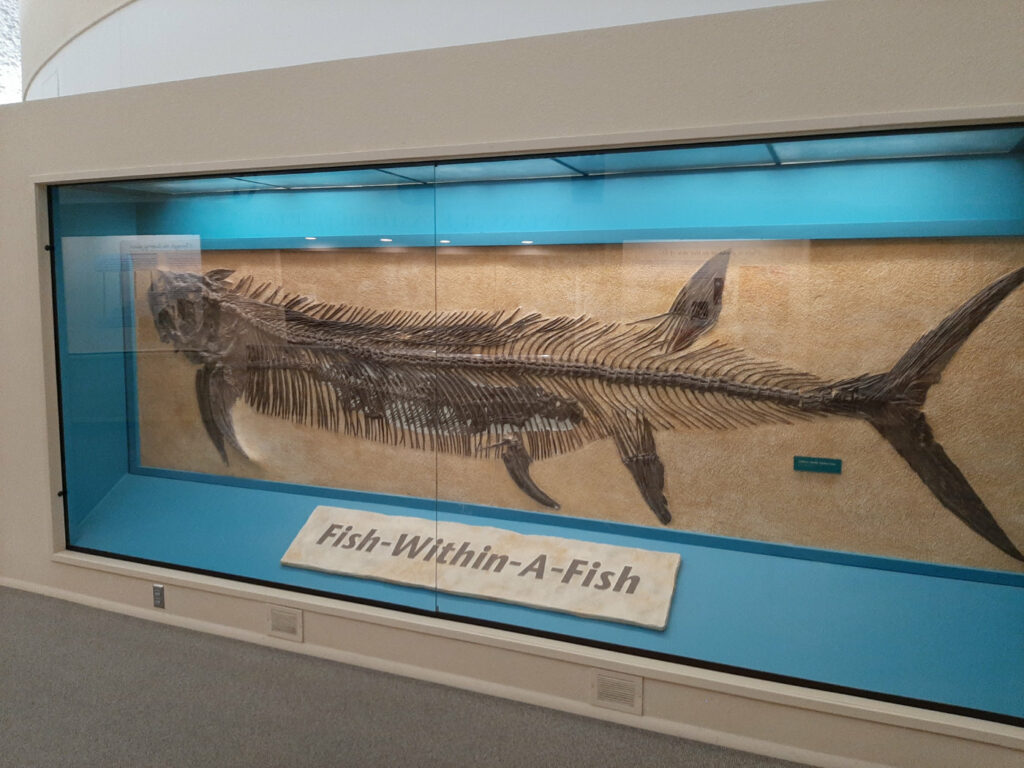
The famous fish within a fish fossil which was found some 50 miles away from Hays, Kansas where the museum is located.
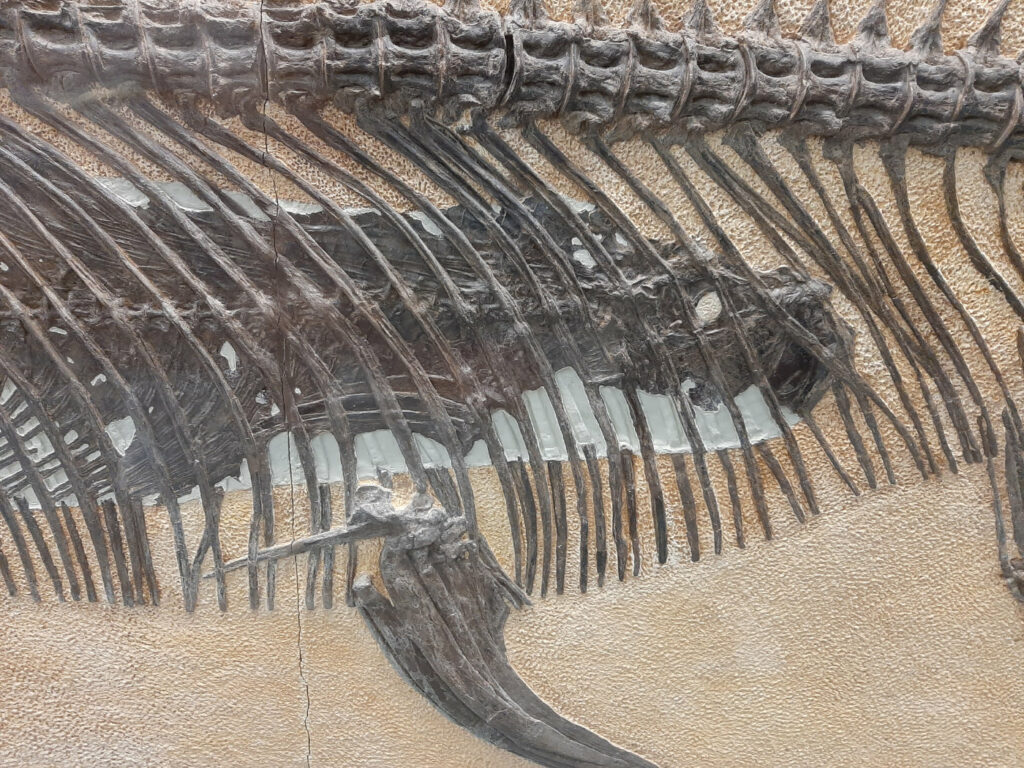
Closeup of the ribs of the larger fish alternating being over and under the smaller fish showing that the smaller was inside the larger fish when they were fossilized.
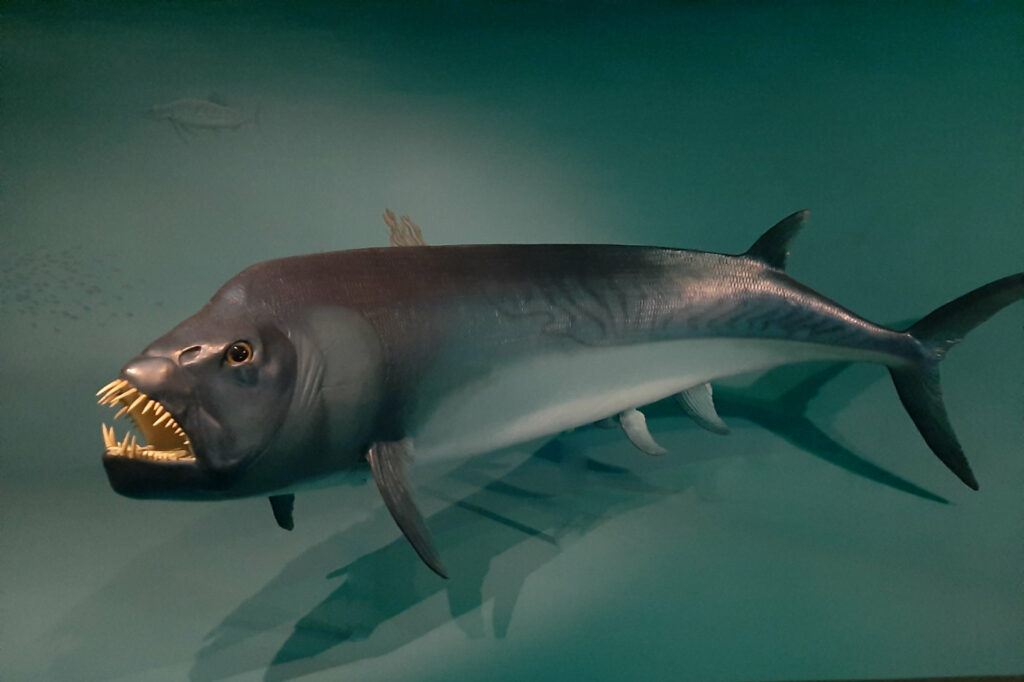
What the swallower looked like. It is 14 feet from head to tail. The fish inside was seven feet long.
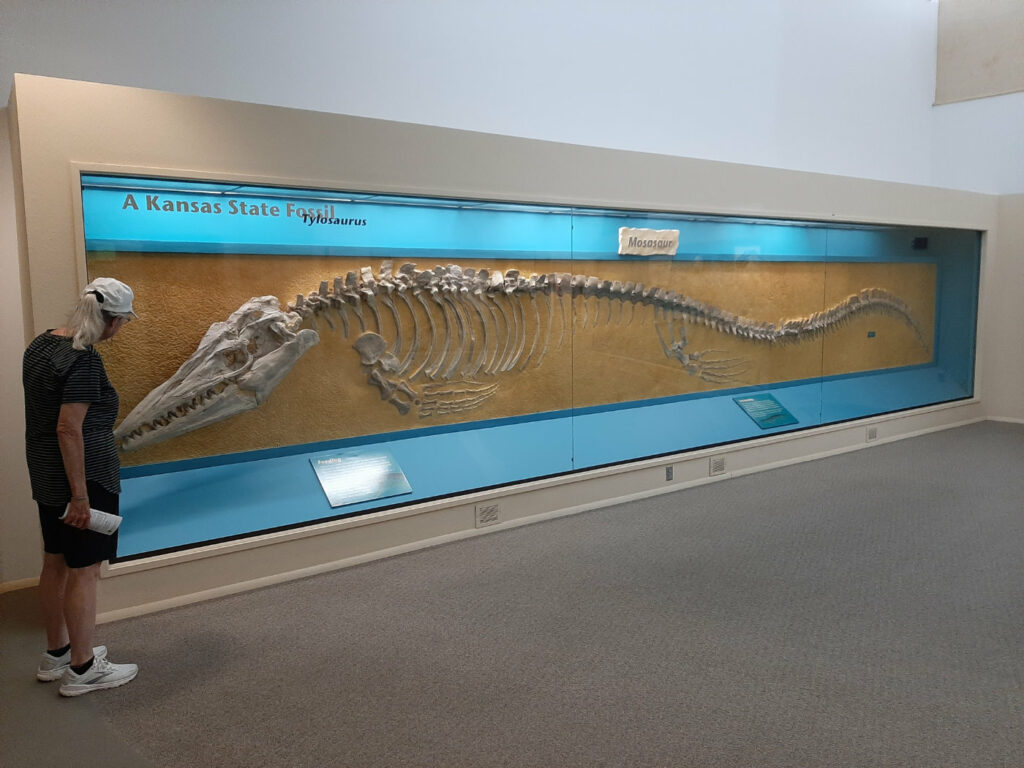
If you were a creature that lived in the in the Western Interior Seaway 70-80 million years ago you were likely food for something bigger and nastier.
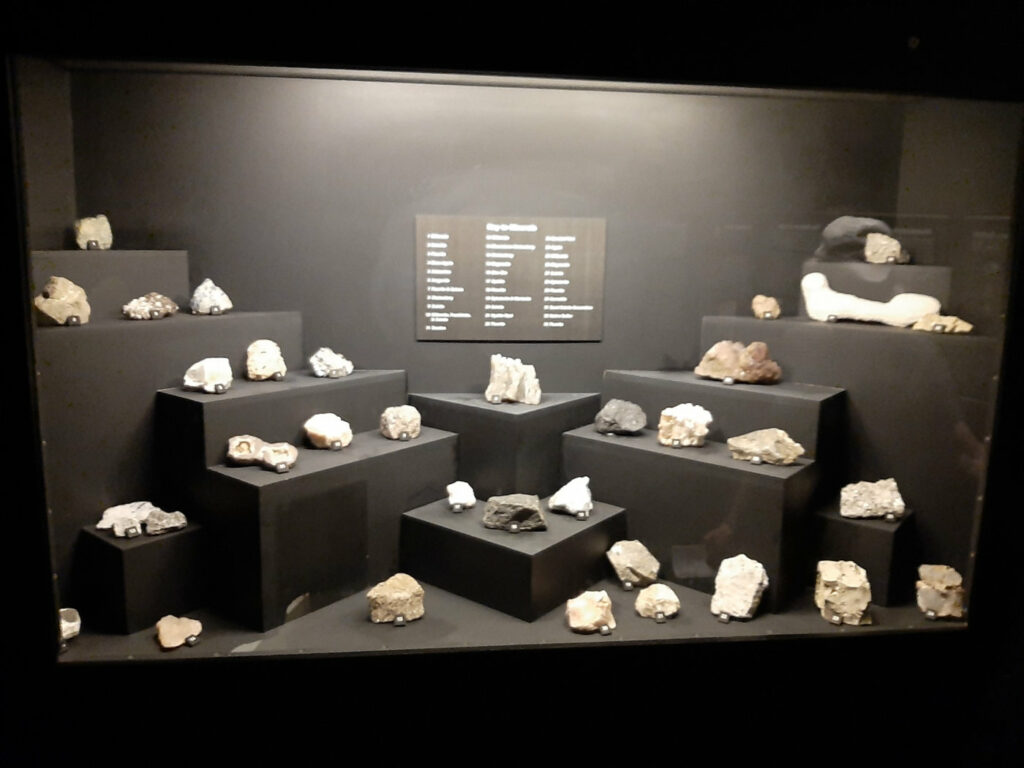
While most of the museum is devoted to fossils, there is more, such as these rocks.
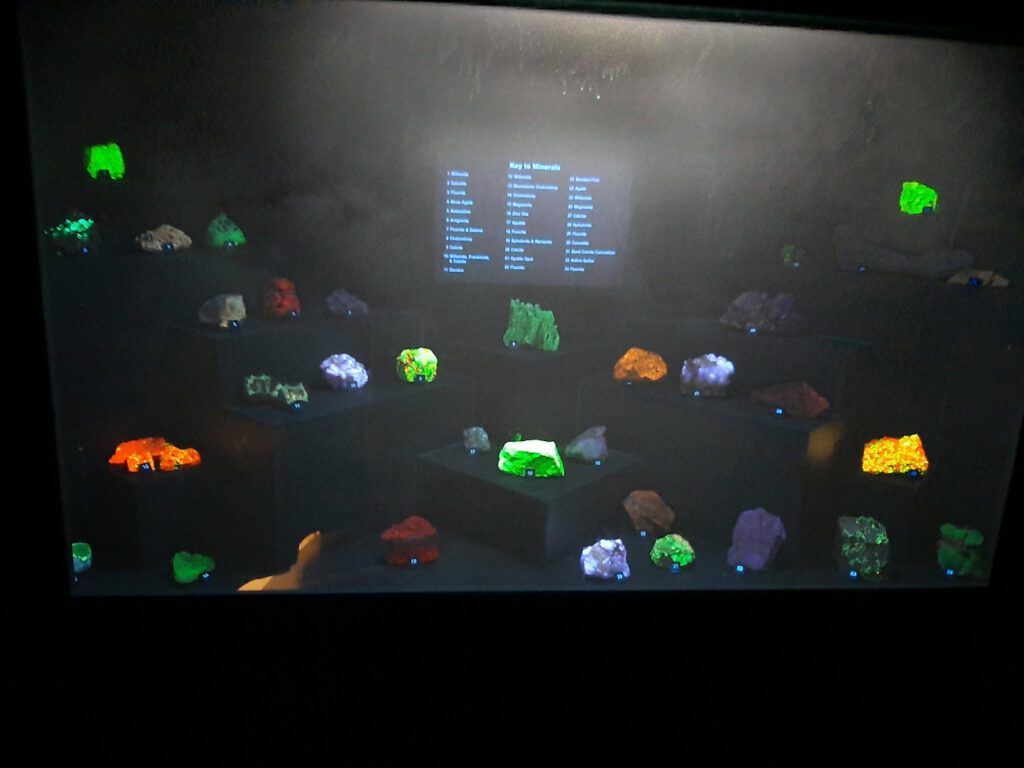
Change the source light to ultraviolet and what a difference it makes.
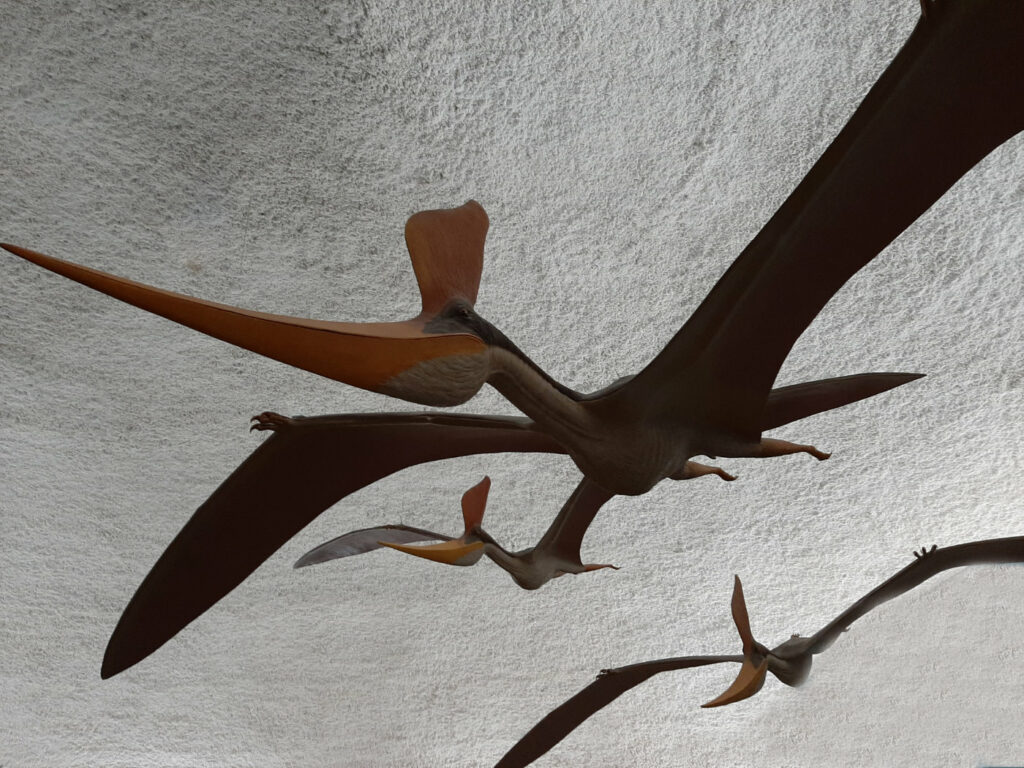
Pteranodon sternbergi overhead on the 3rd floor.
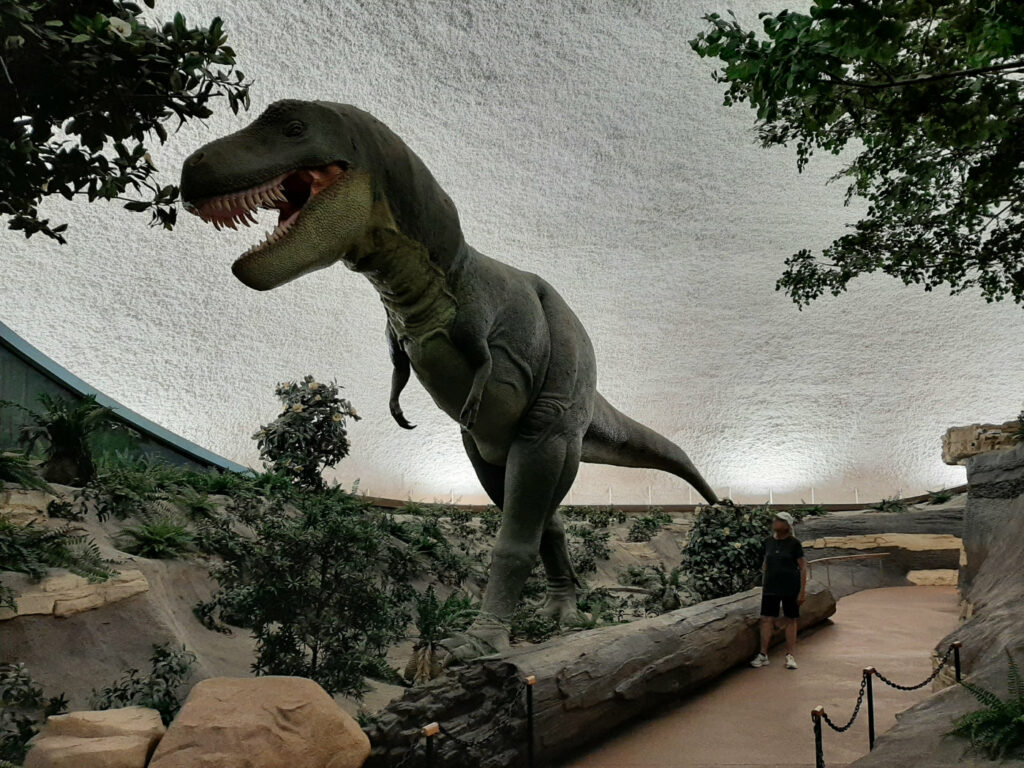
It moves its head and growls. We visited the museum five or six years ago and had it on our must stop again list this through also.